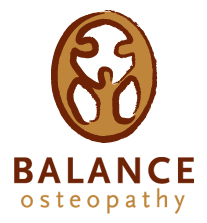It takes 5 years of university training to become an Osteopath and we complete regular Professional Development and consider current and emerging research and evidence in our clinic.
In addition to academic training of anatomy, physiology, biochemistry, embryology and pathology, practical hands-on training is a very significant part of this training, so Osteopaths are therefore familiar with a very wide range of diagnostic approaches, and a wide range of manual procedures and techniques. Many soft tissue techniques including massage, stretching, muscle energy technique, myofascial release, and articulation or mobilisation procedures are a part of the osteopathic repertoire. A range of manipulative adjustments are also learnt, as are very subtle techniques that ease strain out of the tissues of the body. Most Osteopathic training programs also include training in osteopathy in the cranial field which is an exceptionally gentle way of diagnosing and working with the subtle movements within the body.
Due to the comprehensive range of manual treatment approaches learnt by an Osteopath, they are in a good position to be able to choose the treatment approach that is going to best suit a particular individual. Some people’s condition and body type responds optimally to a stronger treatment, and some respond best to a very subtle and gentle emphasis. This wide repertoire of treatment options is one of the main advantages of Osteopathy.

Leave A Comment